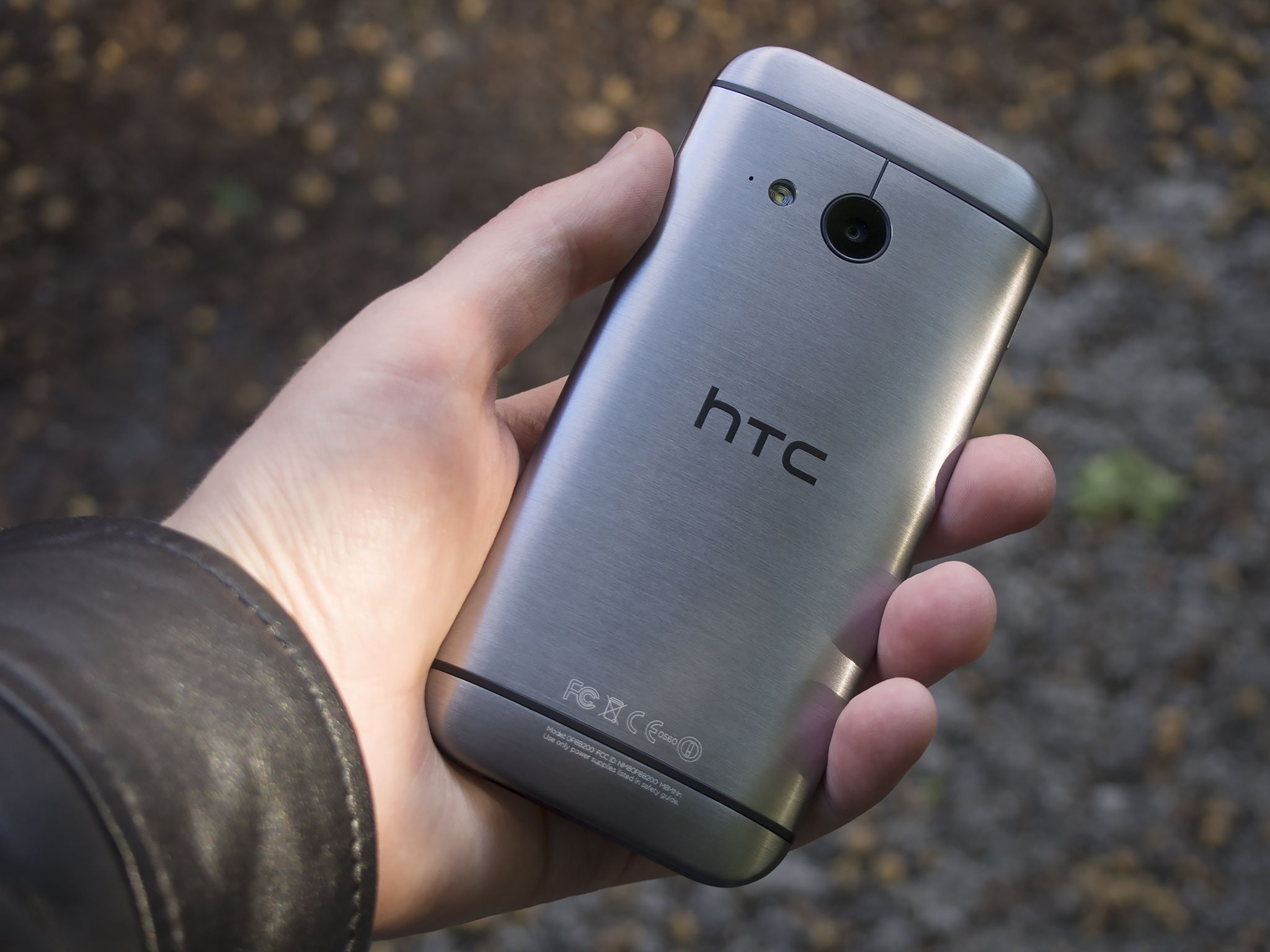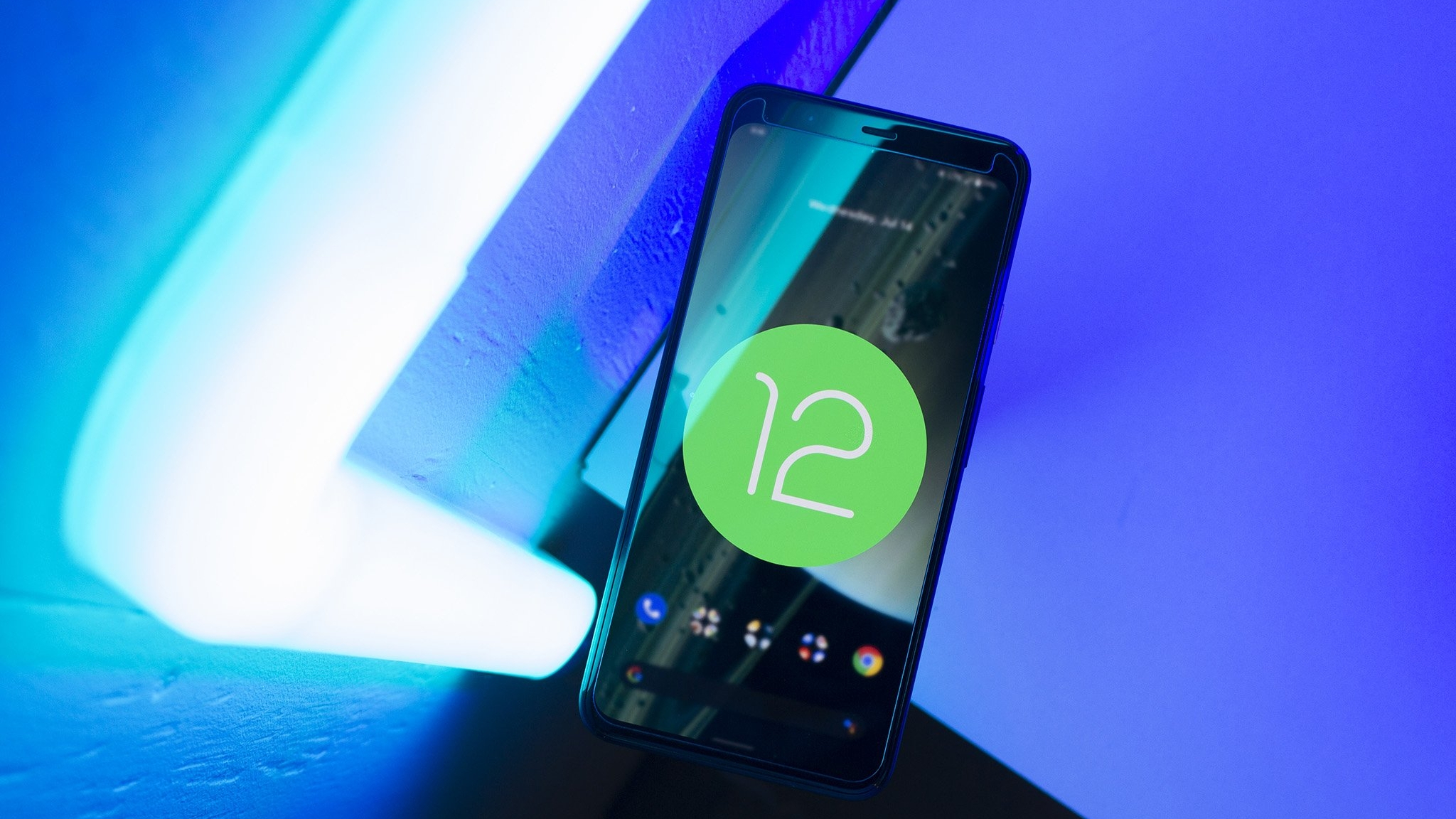In case you hadn't been paying attention, smartphones are getting bigger. In 2014, a 5-inch display is seen as the minimum for serious contenders in the high-end Android world. We've even reached the point where Apple is rumored — finally — to be joining the big-screen club later this year.
It's clear that the market wants (or at least expects) smartphones with gigantic screens. And the side effect of ballooning screen sizes is that phones are getting to be larger than many of us can comfortably hold in one hand. Hence the arrival of "mini" versions of popular Android flagships in recent years.
Rightly or wrongly, many expected devices like the HTC One Mini and Samsung Galaxy S4 Mini to simply translate their full-sized namesakes into a smaller form factor. But in reality it wasn't just the size of these handsets that ended up being cut down. Most (but not all) of these "minis" tended to include middling hardware, reduced performance and often cheaper materials in order to meet a lower target price.
This year's HTC miniature, the clumsily-named but surprisingly compelling HTC One Mini 2, is still intended to hit a price point a couple of tiers below its big brother, the One M8. As we've discovered over the past two weeks, though, that doesn't mean you'll settle for an underwhelming user experience, despite the lack of certain headline M8 features like Motion Launch and the Duo Camera.
The HTC One Mini 2 isn't quite the true M8 Mini some of us were hoping for, but it's a great little phone regardless. The real question is how it'll match up the to older Android flagships now crowding around its launch price, not least of which is HTC's own One M7.
Read on to find out how the HTC One Mini 2 shapes up, as we give it the full Android Central review treatment.
About this review
We're publishing this review after spending two weeks with a European HTC One Mini 2 (MEM_UL), which we've been using on Vodafone and EE (HSPA/LTE) in the UK, in areas with pretty good 4G coverage. Our review unit is a gunmetal gray HTC One Mini 2 running software version 1.16.401.2; the phone will also come in silver and gold color options, like the HTC One M8.
Our review unit comes from an early production run of HTC One Mini 2 handsets. In our initial hands-on and video walkthrough we mentioned that subsequent runs would have a slightly different color volume rocker — one that more closely matched the dark gray chassis color. HTC now informs us that the plan is for all future runs of the device to feature the same silver-shaded volume rocker that you see in our photos.
Hardware and build quality
A miniaturized M8, more or less
Though it's not branded as an "M8" as such, it's hard not to describe the HTC One Mini 2 in terms of HTC's current flagship smartphone. From the proportions of the speakers and bezels to the subtle, palm-friendly curvature of the back, to the radius of the rounded corners, the Mini 2 is the spitting image of the HTC One M8.
In fact, the design bears little resemblance to last year's HTC One Mini besides trademark HTC features like the front-facing speakers. That's a good thing — this is a softer, rounder Mini heavily influenced by the new "M8" design language. And thanks to its smaller size and slightly chunkier chassis, it's much easier to hold onto than its larger sibling. There's not quite as much aluminum on show as the M8, but it's raised further around the sides than the previous One Mini, meaning your hand's in contact with more metal than plastic.
HTC tells us the body of the phone is 70 percent metal, like the HTC One M7. That's down from the 90-percent-metal M8, but still an impressive feat. There's just enough metal present for it to feel like you're holding a real aluminum unibody. And the plastic that is there — mainly between the unibody and the front face — is done right, flowing almost seamlessly into the aluminum back.
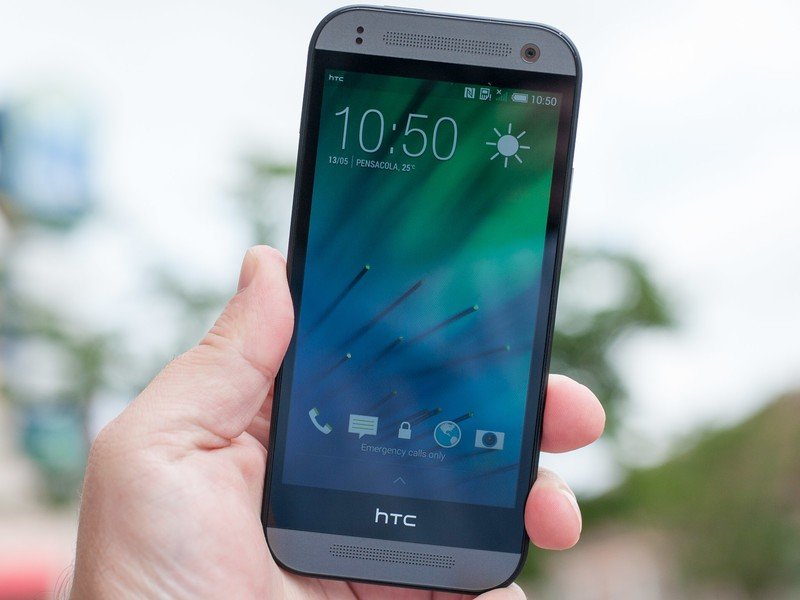
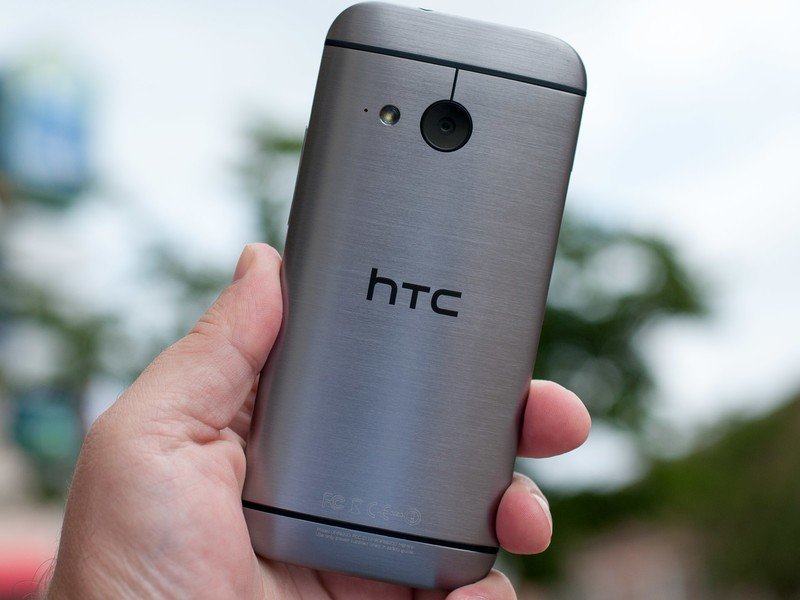
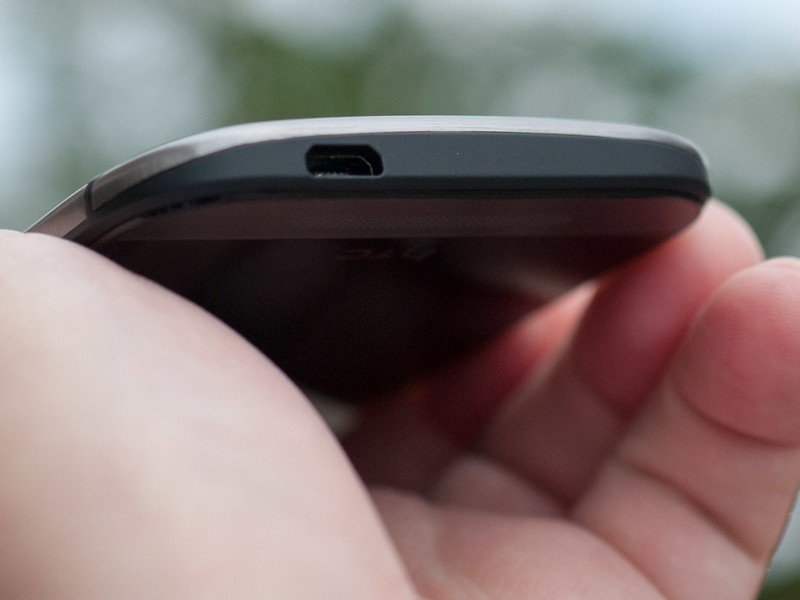
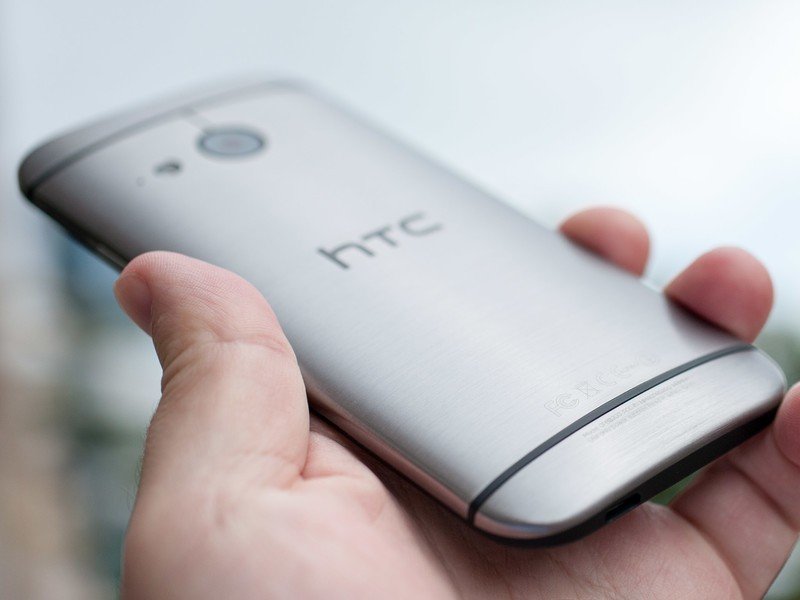
The Mini 2, with its 4.5-inch screen, is about as tall as the 4.7-inch One M7 — although it is narrower, making one-handed thumb-typing easier. And the bezel measurements in all directions (including the speakers) are almost identical to the M8, meaning they're proportionally larger than that phone. So it's a taller "mini" than you might be expecting, but we've had no problem one-handing this phone like any other. The back is still a little slippery, on account of the texture of the gunmetal gray model we've been using, but nowhere near as slick as the M8.
The One Mini 2's metal unibody flows seamlessly into the plastic element around the sides.
To dust off an old reviewing cliché, it feels good in the hand. As always, the brushed gunmetal finish looks fantastic, while also giving the phone a soft, comfortable in-hand feel. On the silver and gold models you'll get a slightly rougher, matte texture to your aluminum, making it just a bit grippier. And at 137 grams the phone feels substantial, but not heavy.
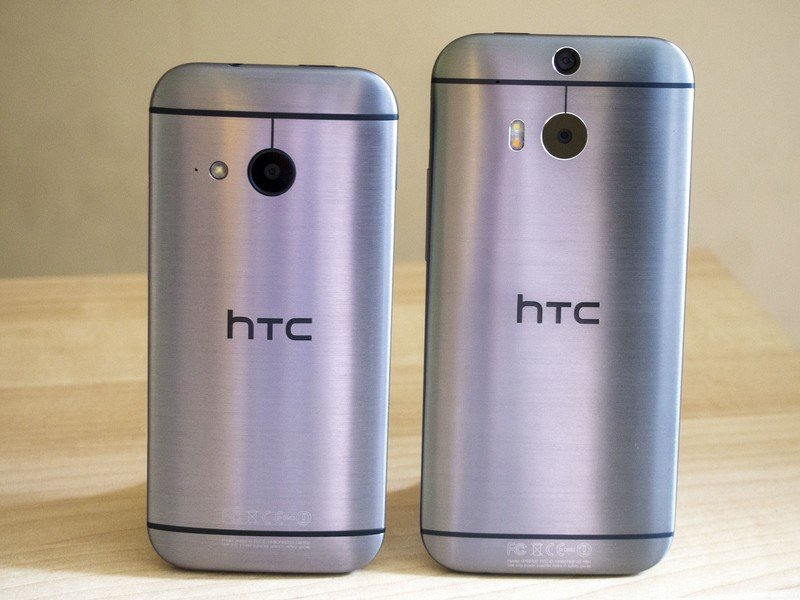
Flipping the Mini over reveals one of the major changes from the M8. There's just one camera — a 13-megapixel shooter, the same module used in the Desire 816 — and a single LED flash. We'll dive deeper into the Mini 2's camera experience later in this review, but the move away from an Ultrapixel sensor in an HTC One-branded handset bears mentioning. Though the Mini 2 captures more detail in daylight shots than the Ultrapixel-equipped M8, folks upgrading from last year's One Mini may be disappointed to find features like the Zoe shooting mode missing, not to mention reduced quality in low-light shots compared to their old phone.
At the same time, the lack of a second camera for capturing depth information means you won't be able to add any depth-dependent artistic or 3D effects to your photos, nor use these in your video highlight clips.
Granted, it's not like the Ultrapixel sensor doesn't have issues of its own, but the decision to go with a more traditional smartphone camera in its latest One family member is a curious choice for HTC. "Ultrapixel" was prominently it featured in 2013's HTC One lineup, enabling capabilities like Zoes, which fed into the video highlights feature. As it stands, the Mini 2 gets a decent but not outstanding 13-megapixel shooter without the Zoe shooting mode.
You do get the same excellent 5-megapixel front-facing camera from the M8, though, a boon for selfie enthusiasts.
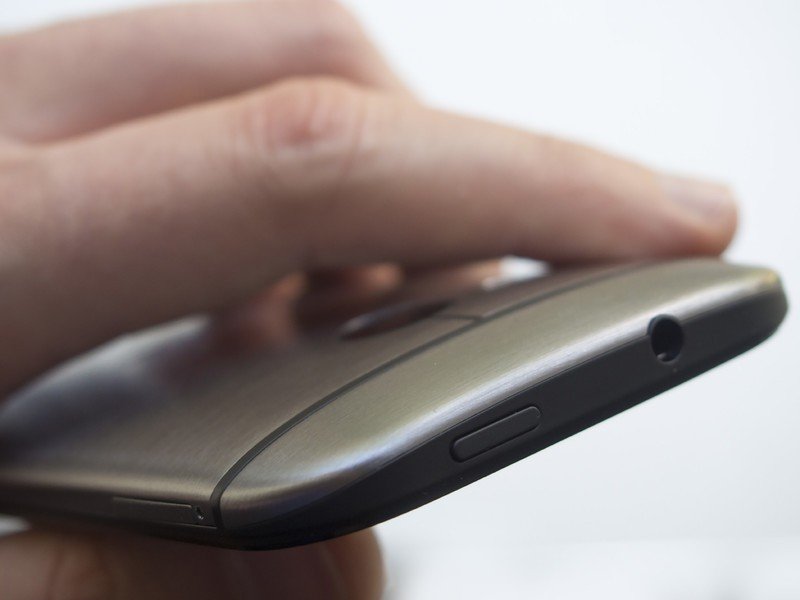
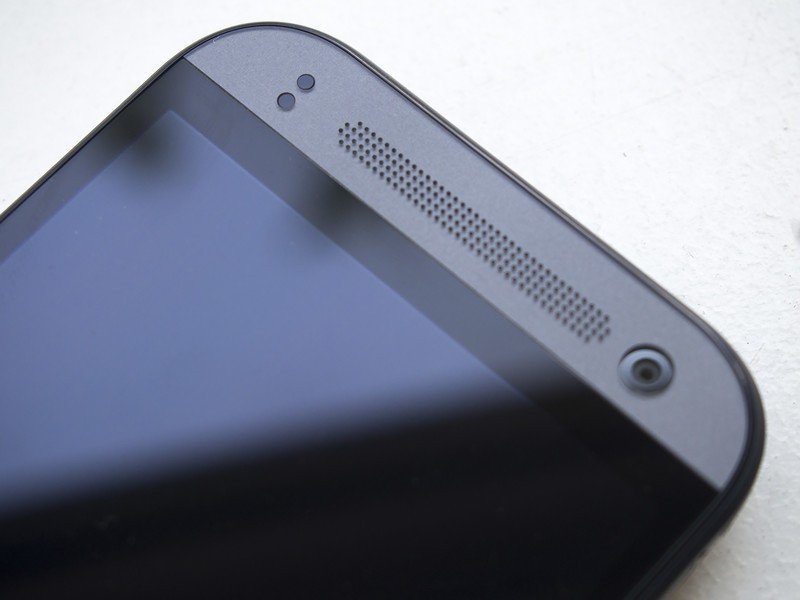

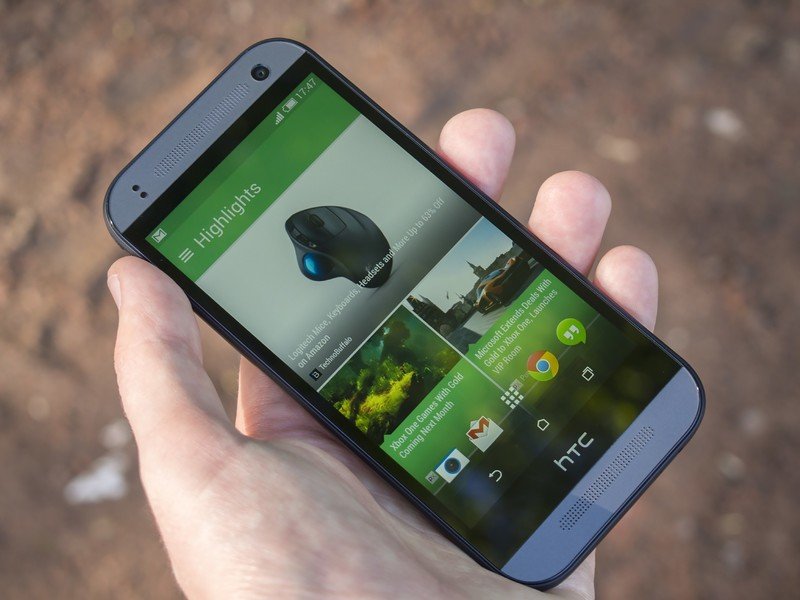
Around the front, the One Mini 2 packs a 4.5-inch 720p LCD with an iPhone-matching 326 pixels per inch. The panel boasts excellent viewing angles and brightness, and we've used it without issue even in very bright sunlight. If we were to start nit-picking, we'd point out that its colors look slightly less vibrant than the One M8, though part of this seems to be due to color temperature differences — the Mini 2's screen is noticeably cooler than the M8 we've been using in recent months.
The display boasts bright colors, great viewing angles and iPhone-matching pixel density.
As for the front-facing speakers, they're not quite as loud or bassy as the M8's, but they're still comfortably better than any non-BoomSound setup we've used on a smartphone. And yes, still a major point of differentiation for HTC, even on a smaller handset.
The Mini 2 doesn't hold too many surprises in the area of buttons and ports. There's a metal volume rocker on the right, under the microSD slot, and you'll find the nanoSIM tray over on the left. MicroUSB is down below, with the headphone jack up top, next to the power button. There's no IR blaster on the One Mini 2, so this time around the power button is just a button. It's worth noting that since the M8's Motion Launch feature is absent, you'll need to reach up top every time you want to turn the phone on — which isn't terribly inconvenient, especially if you've used an M7 or an OG Mini, but we'd still prefer a power button on the side.
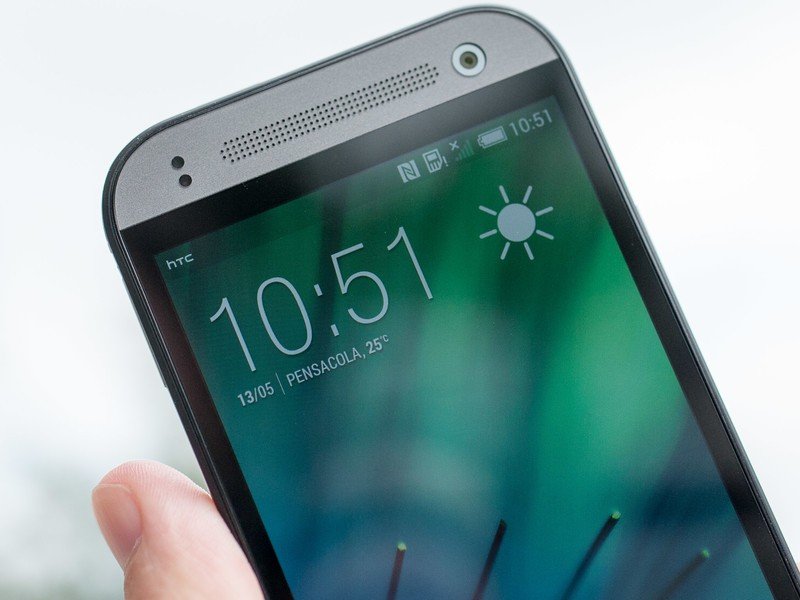
Internal hardware and performance
Snapdragon 400 goes the distance
On the inside, the HTC One Mini 2 is powered by a Qualcomm Snapdragon 400 quad-core processor, consisting of four ARM Cortex A7 cores at 1.2GHz and an Adreno 305 GPU. That's almost the same setup we saw in the Desire 816, only clocked a little lower. At the same time, there's just 1GB of RAM, which is about the minimum we'd hope for on any Android phone these days. (That said, we didn't run into any memory-related issues.)
There's also 16GB of internal storage, with 11GB and change left over for your own stuff, and that's is expandable by up to 128GB through the microSD slot. As well as photos and music, certain apps can be moved to the SD card through the Settings > Apps menu, though you'll want to use a fast microSD for best results.
When it comes to connectivity, the One Mini 2 offers a standard array of features — Wifi up to 802.11n on 2.4 and 5GHz, Bluetooth 4.0 and NFC. That's in addition to quad-band 42Mbps HSPA+ and 4G LTE — Bands 3, 7, 8 and 20 on our European model, Bands 1, 3, 7, 8 and 28 in Asia.

Numbers aside, what's most striking about the One Mini 2 is how, in most tasks, it really doesn't perform noticeably slower than the M8. There's a difference, sure, but it's really, really small, to the point where you won't see it unless you're holding both phones side by side. We haven't once run into an instance of scrolling lag in HTC Sense, nor are apps significantly slower to kick into action than on HTC's flagship. And compared to last year's HTC flag-bearer, the One M7, the performance delta is even smaller.
Numbers aside, the Mini 2 really doesn't seem any slower than the M8 in a lot of areas.
As is the case with the Desire 816, HTC has done a fantastic job bringing Sense 6 to life on less powerful hardware. Our only cause for concern is that 1GB of RAM, which could limit the Mini 2's future prospects as apps become more memory-hungry.
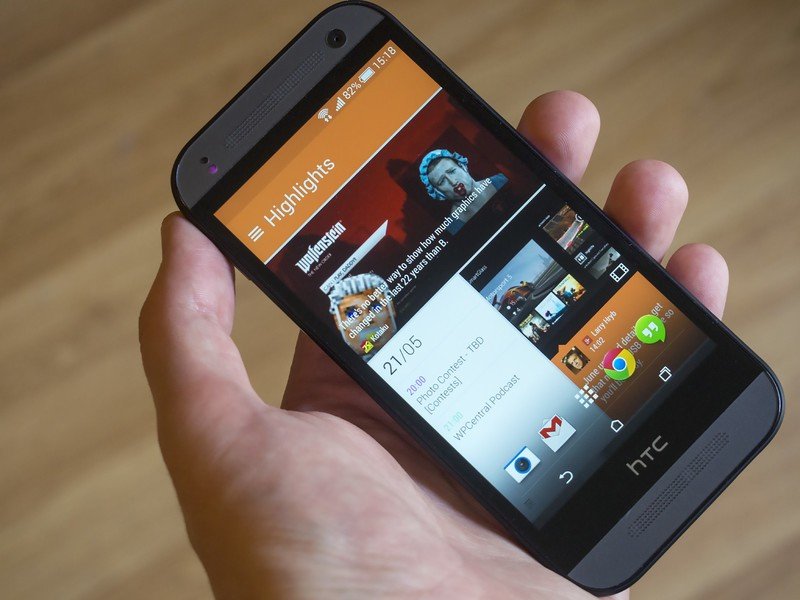
HTC One Mini 2 software
Sense 6, minus some of the cool stuff
We've been getting to know HTC Sense 6 on the One M8 over the past couple of months, and the experience on the One Mini 2 is broadly the same, though you'll miss out on a handful of hardware-dependent features on the smaller handset.
If you're familiar with HTC's mid-range flagship, the Desire 816, the Mini 2's software experience is essentially identical to that phone, just on a smaller screen.
Sense 6 is lighter, brighter, flatter and more colorful than earlier versions of HTC's UI, with minimal visual clutter and a handful of colored themes to choose from. The home screen experience is based around BlinkFeed, HTC's customizable home screen reader, which includes social content, app updates and news, along with up to five standard home screen panels. And there's an array of attractive, minimalist widgets for weather, calendar, and the built-in music player, among others.
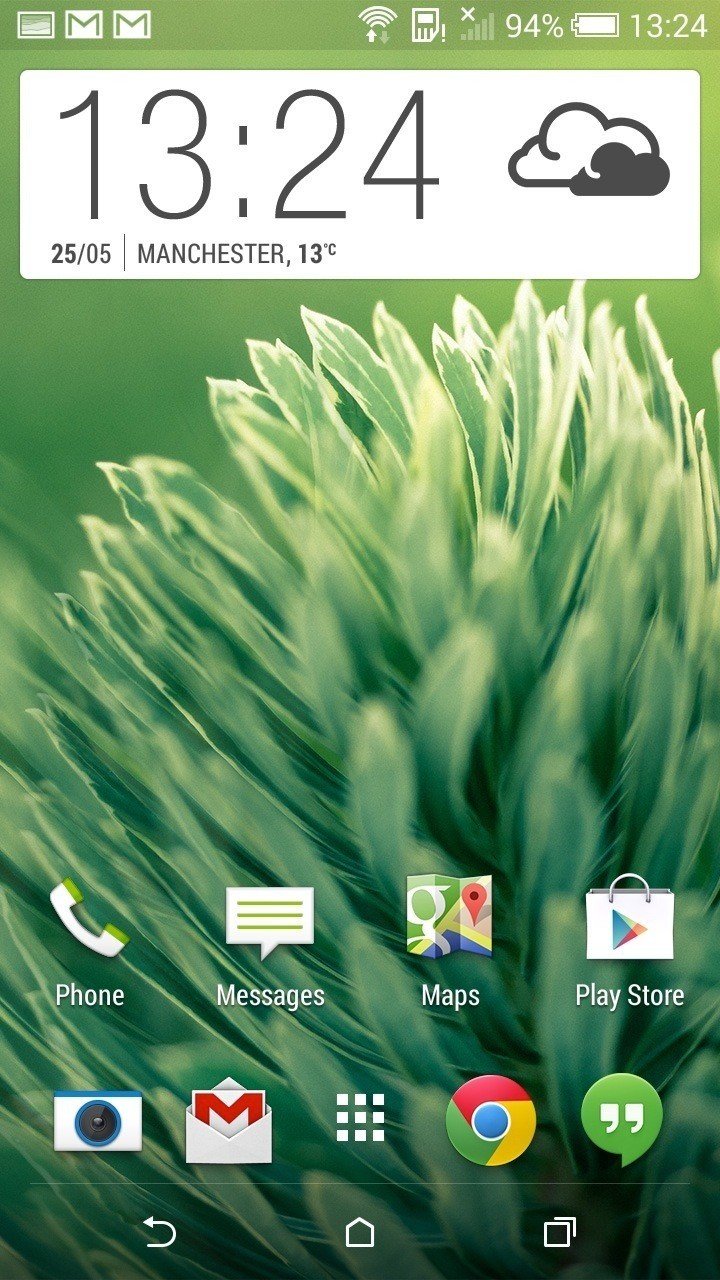
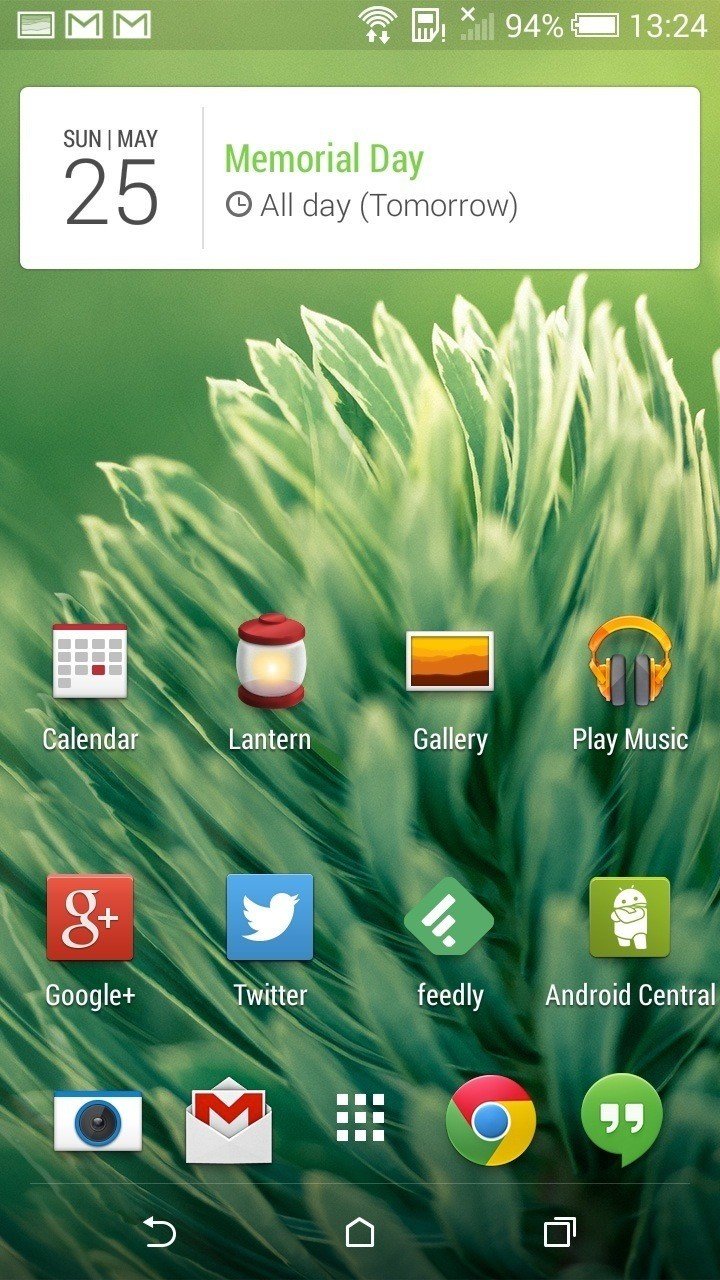

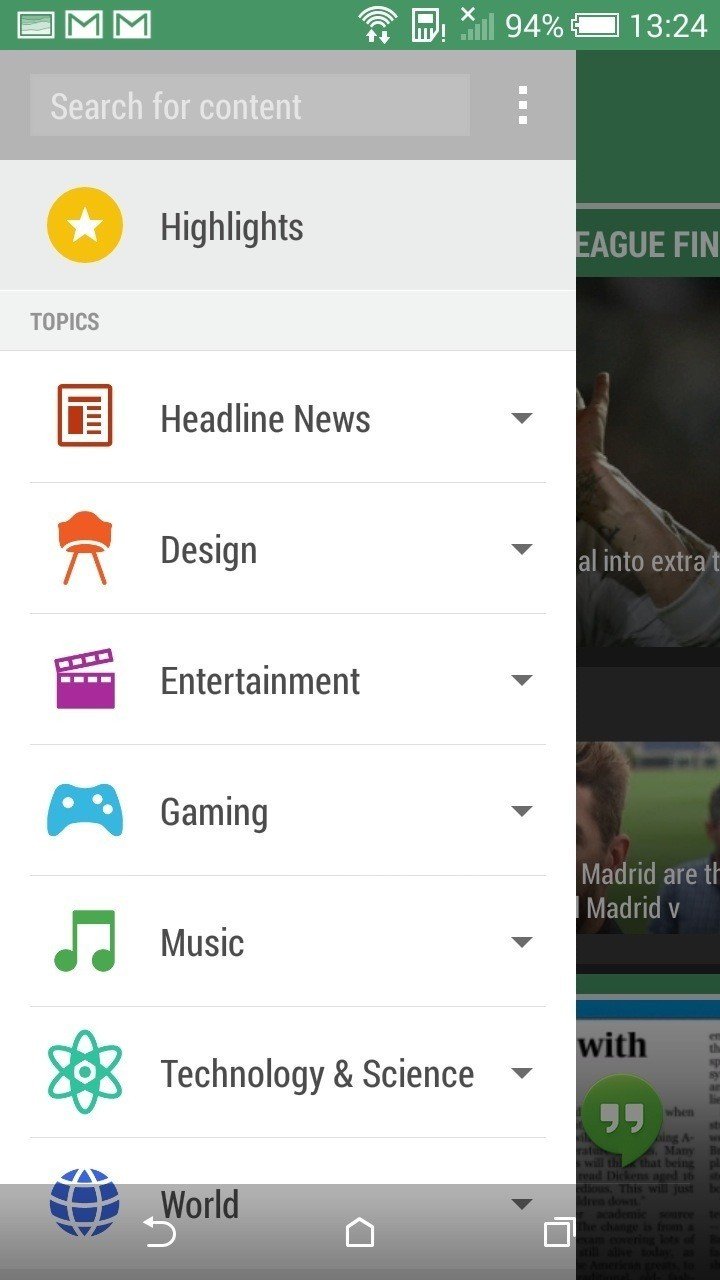
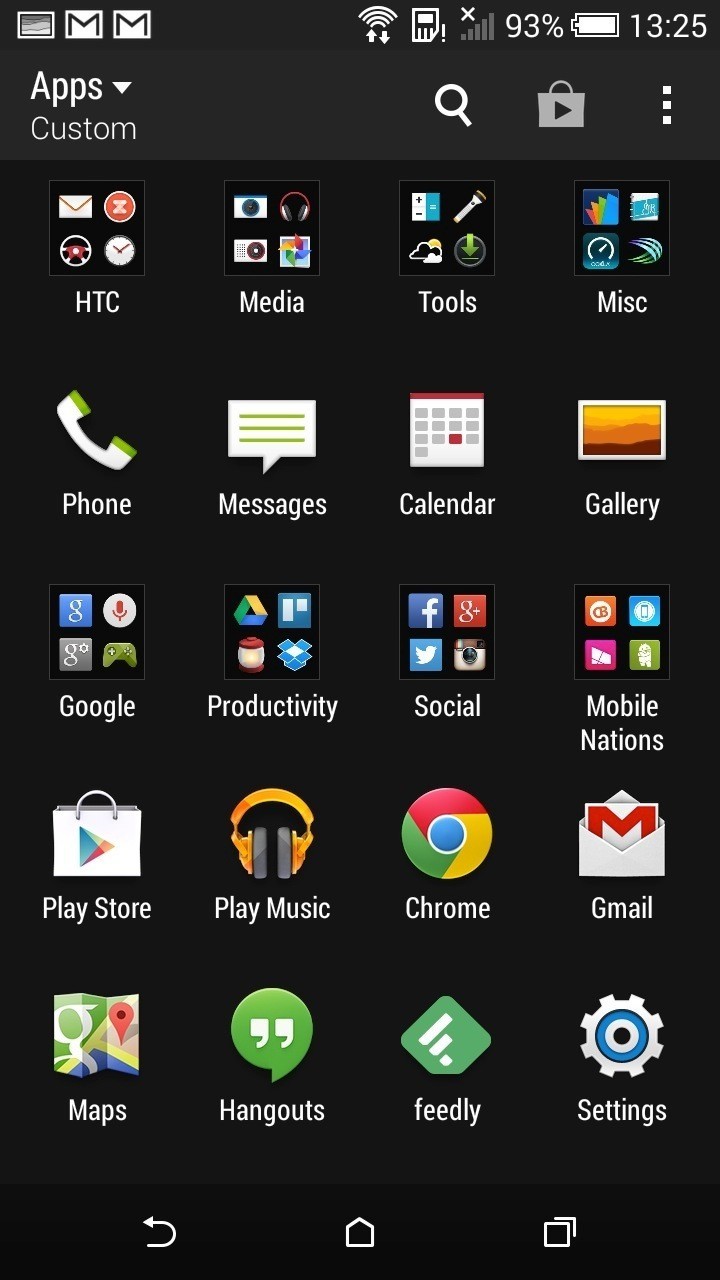
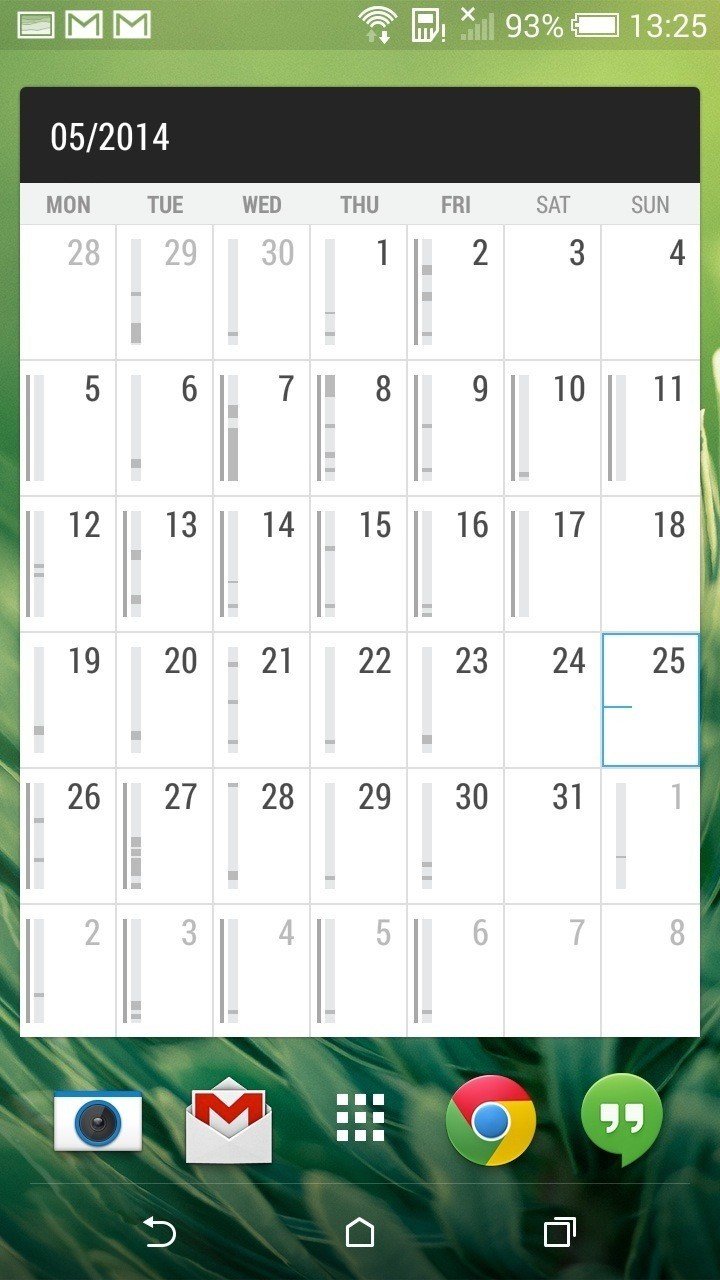
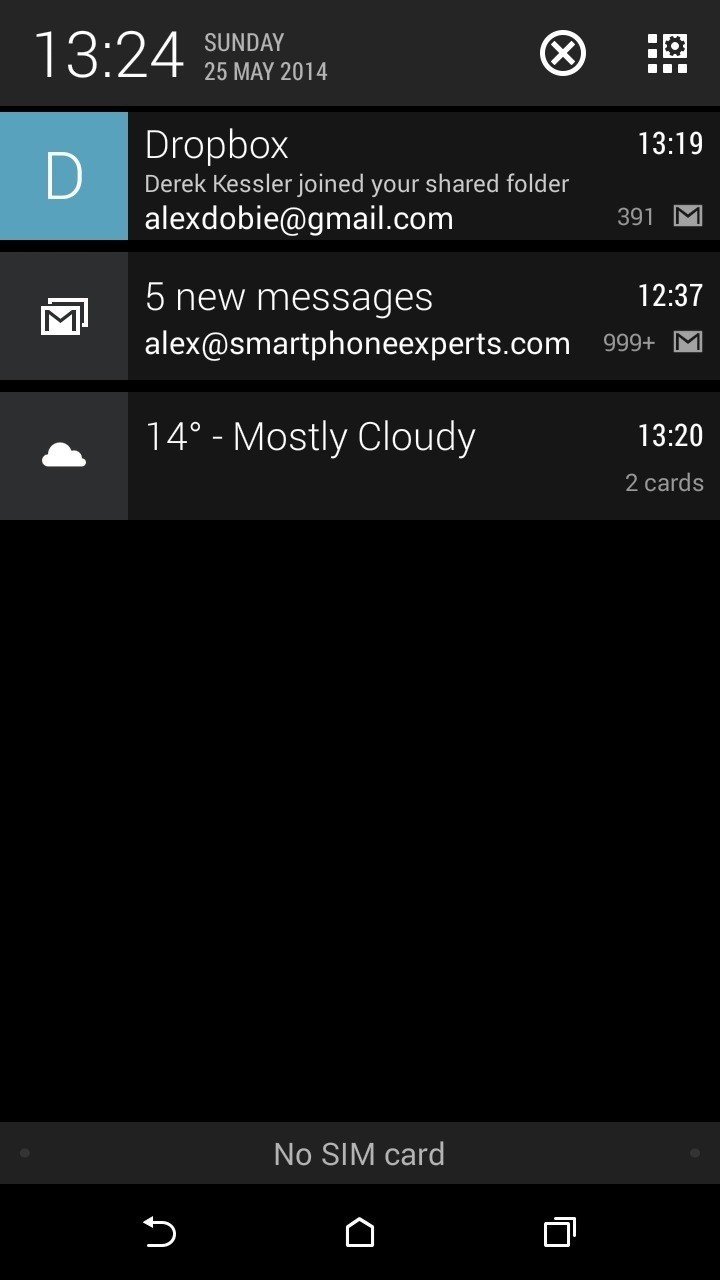
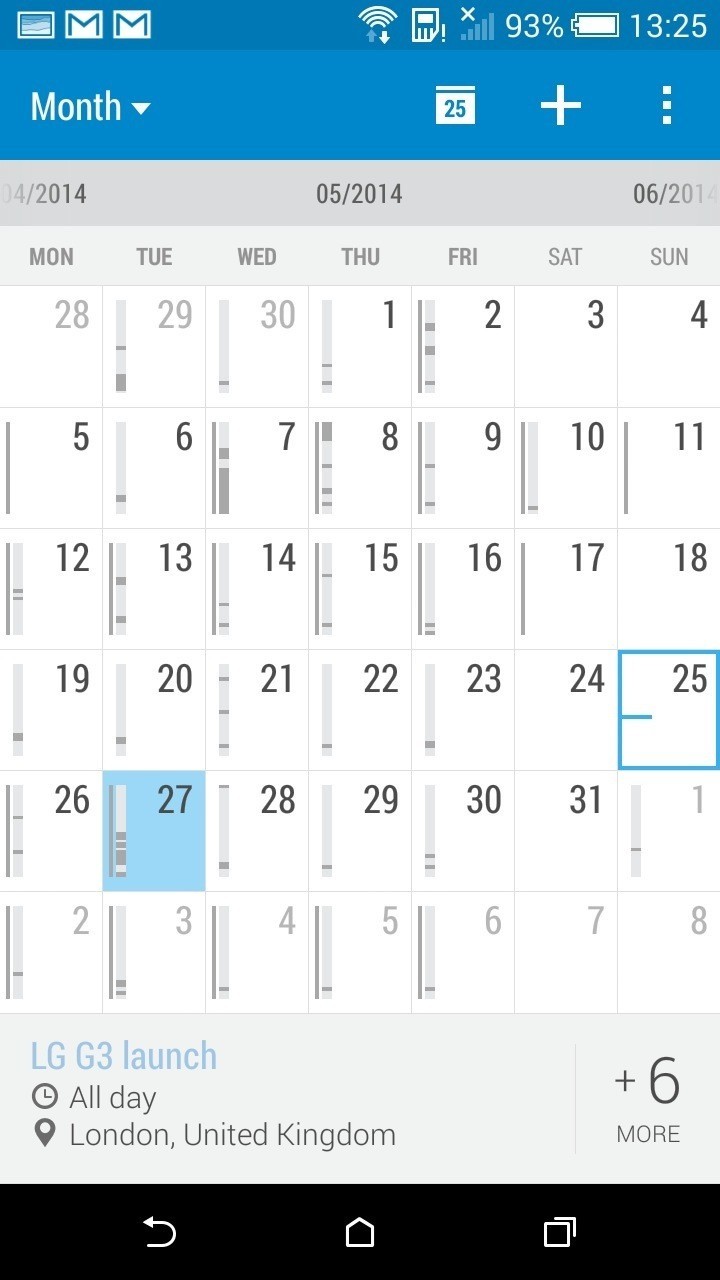
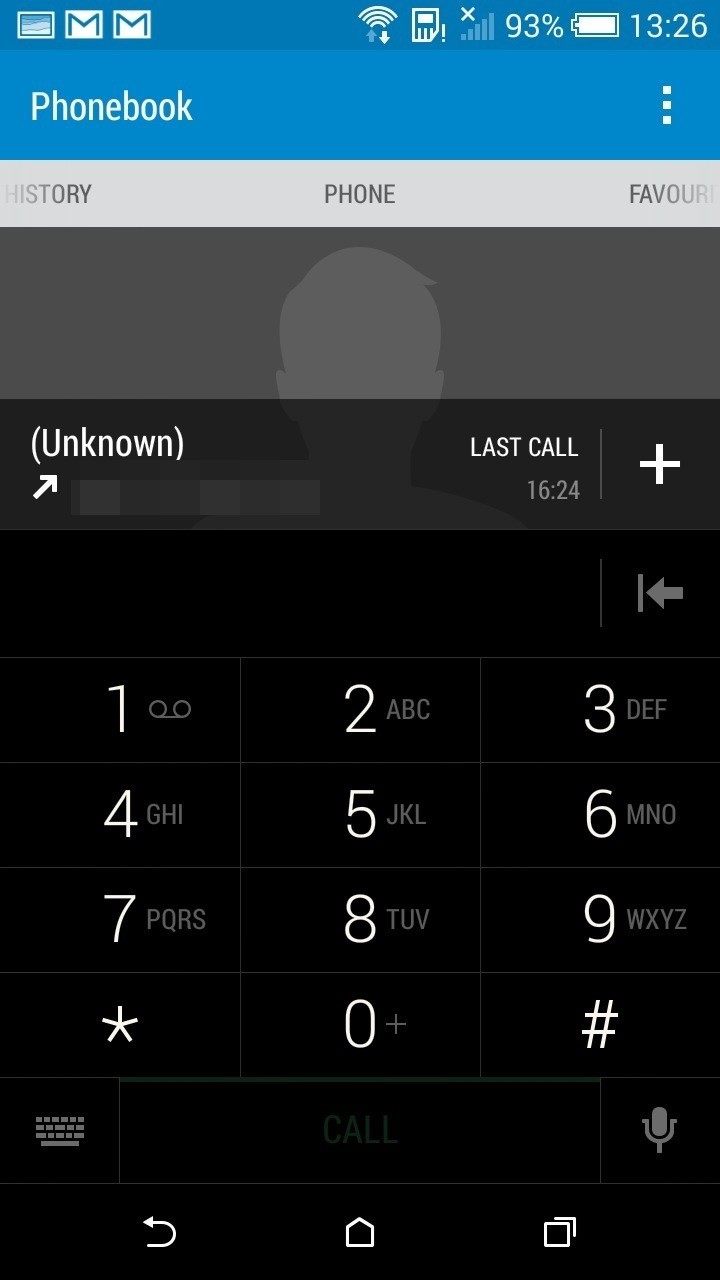
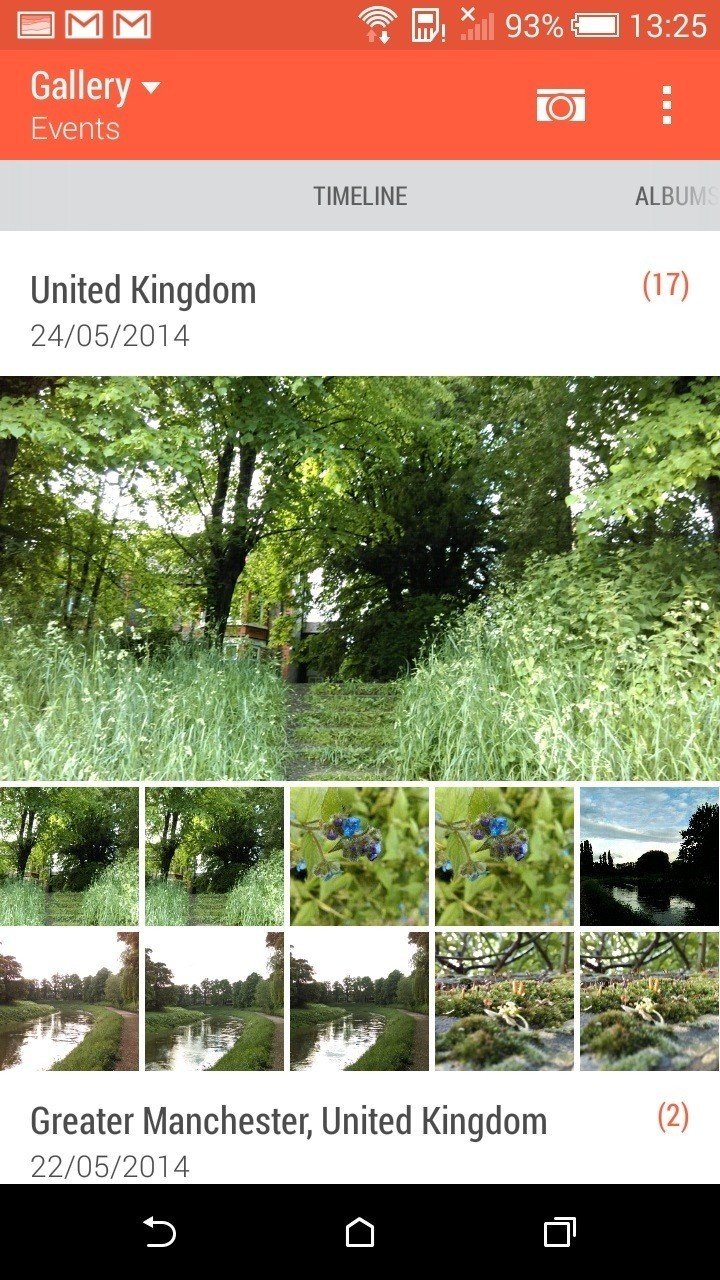
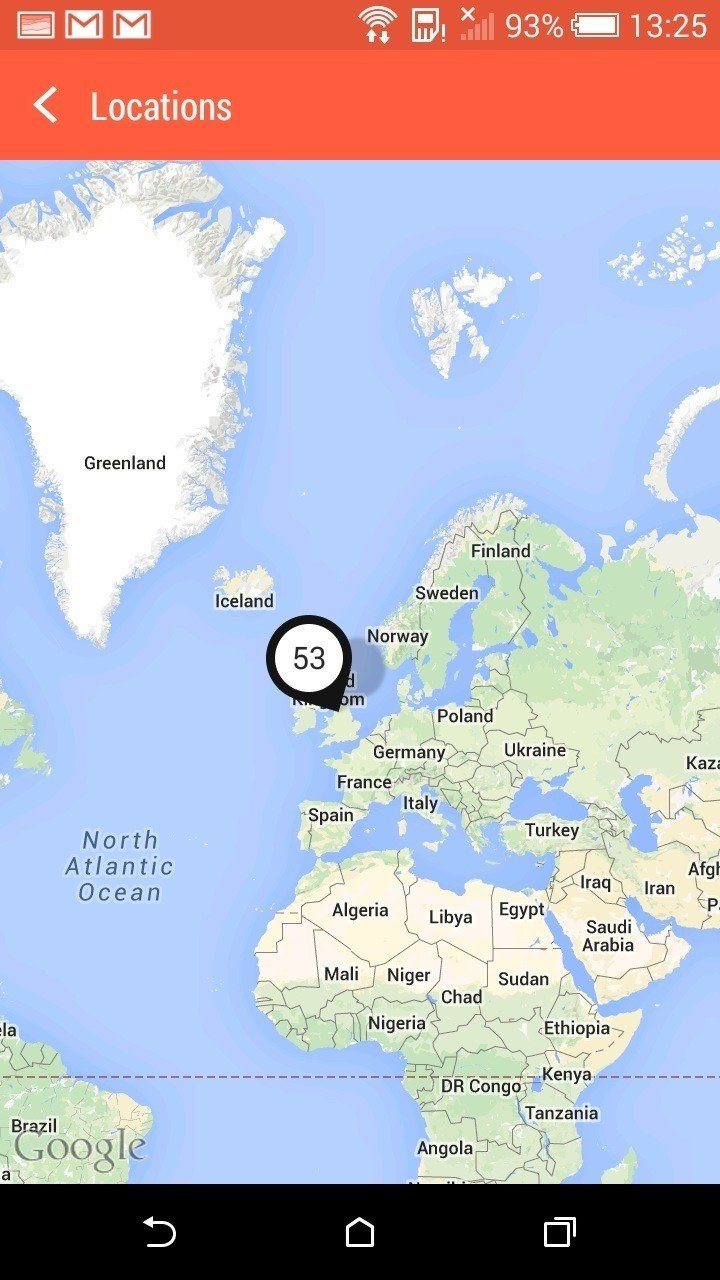
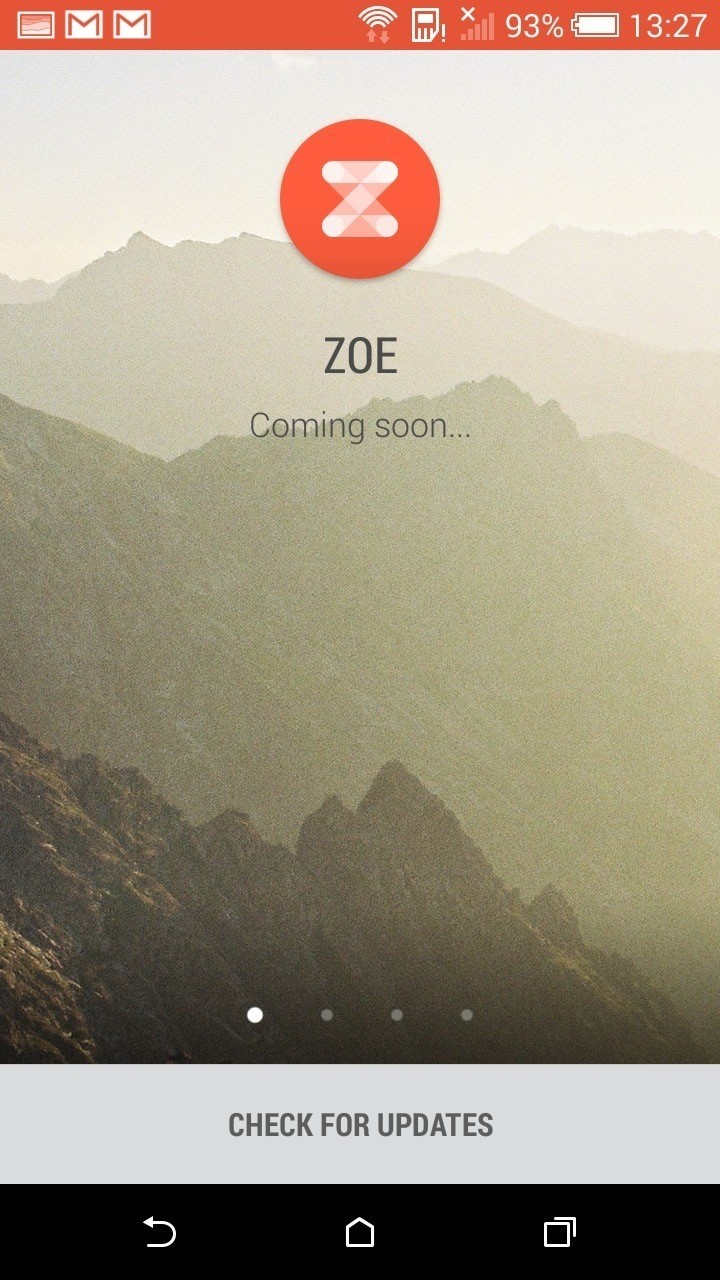
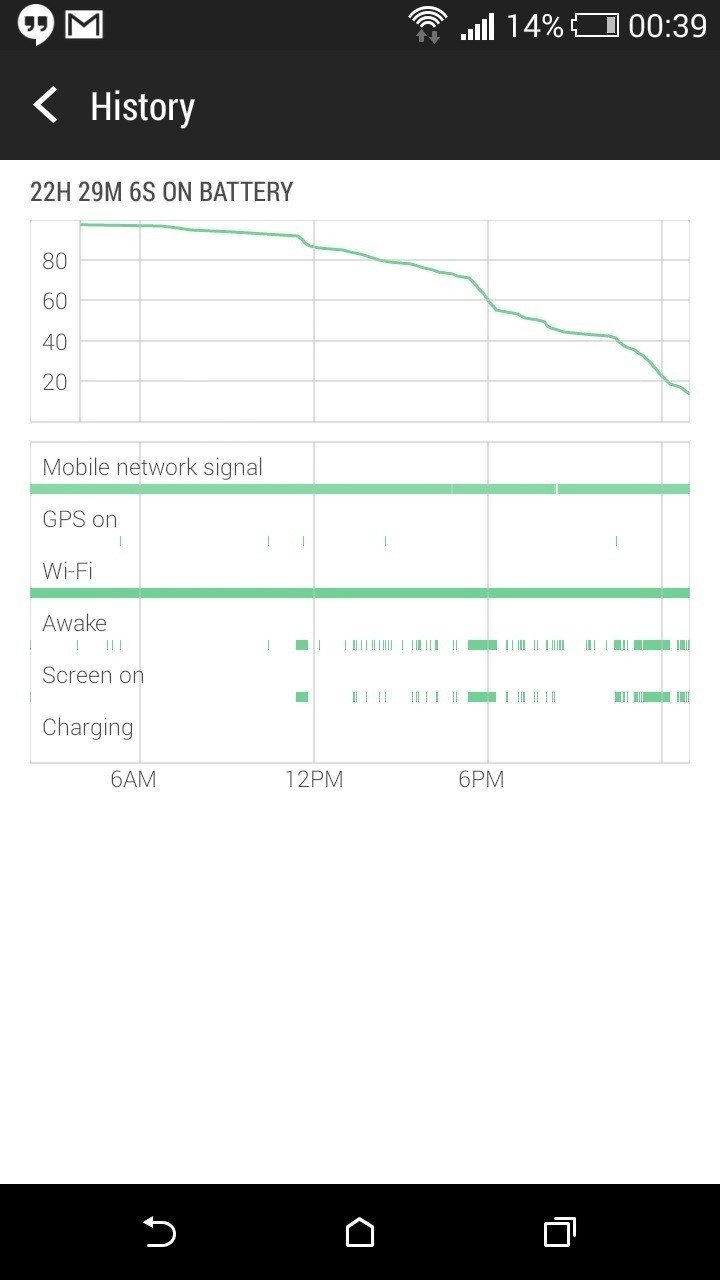
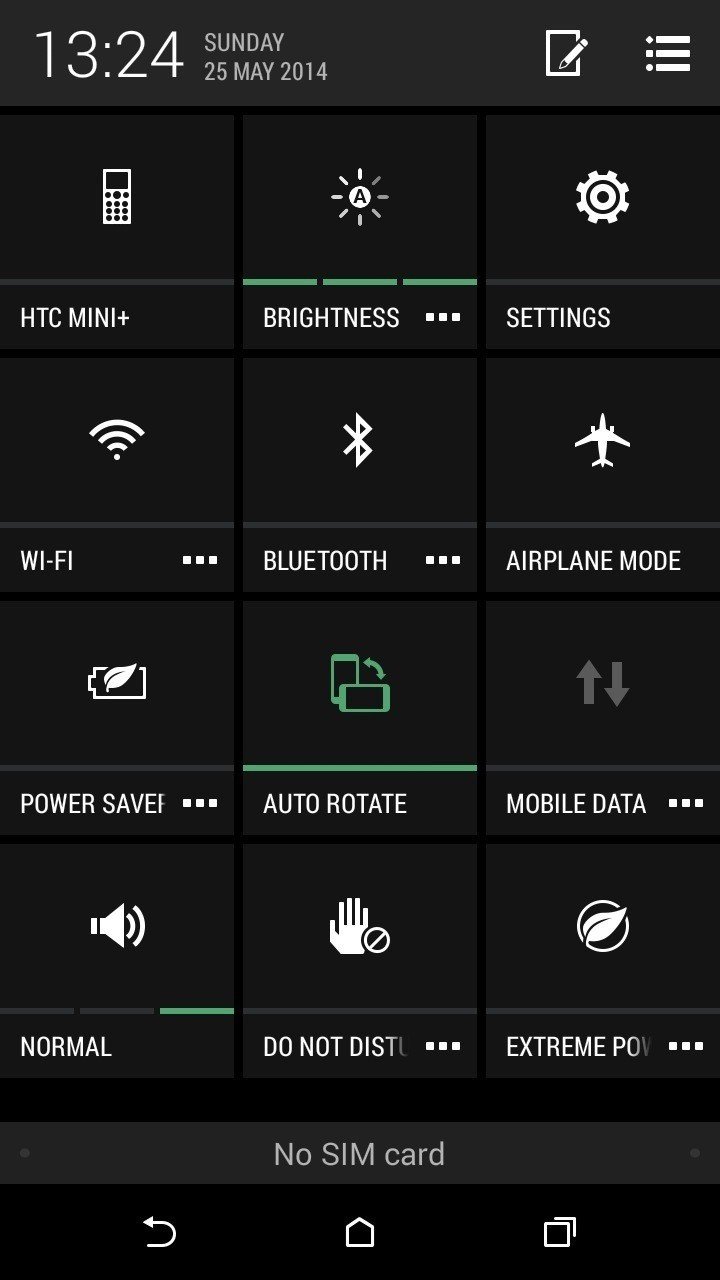
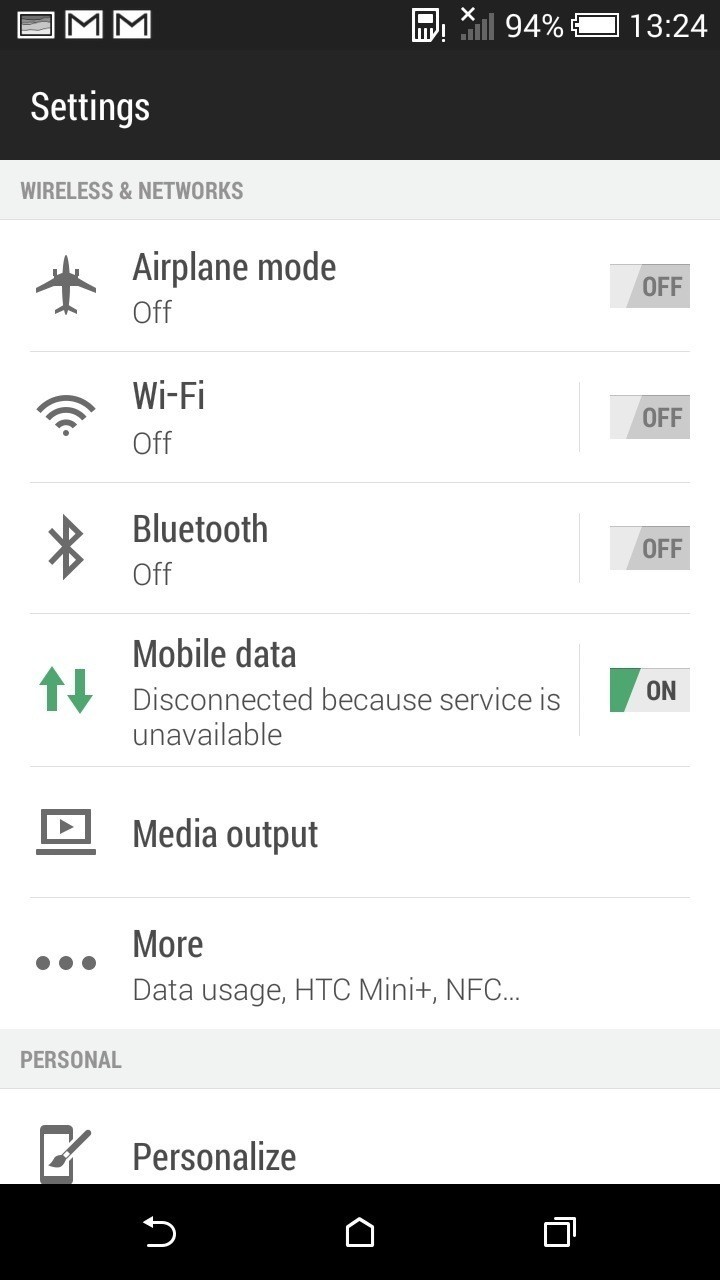
The whole UI is quick to navigate, with smooth scrolling and near-instant touch response. And even in more demanding non-HTC apps like Google Chrome when viewing desktop websites, the One Mini 2 always had enough power to meet our needs.
Sense 6 is as flat, bright and speedy as ever on HTC's new Mini.
Besides BlinkFeed, which has grown to become one of our favorite Sense features over the past few months, you also get the full-featured HTC Sense gallery app, including instant video highlight reels. However, the lack of the Duo Camera and Zoe shooting mode means your highlight clips won't look quite as impressive, with fewer whiz-bang effects. For what it's worth, the placeholder app for the Zoe cloud sharing is available, so when that service launches you'll be able to access it.
The Mini also offers a host of power-saving software features, which we'll explore a little later.

You get the picture — for the most part, it's Sense 6, just as you'd experience it on an HTC One M8. On paper the jump from a Snapdragon 801 to 400 is substantial, but the Mini 2 generally manages to go toe-to-toe with its high-end cousin when it comes to performance and usability.
But there are some higher-end features you won't find on the smaller phone.
For us, the big one is Motion Launch, the ability to double-tap or swipe the screen when the phone's asleep to unlock directly to the home screen, BlinkFeed or the most recent app. The smaller size of the Mini 2 makes hitting the power button less challenging, but Motion Launch very quickly became our default way to unlock the M8, and it's a shame that owners of the Mini will miss out on it.
Sense TV — HTC's second-screen viewing app — is out, too, on account of the Mini 2's lack of an IR blaster. That makes the Mini less capable in the living room, but it's not an oversight we're losing any sleep over.
And then there's the camera...
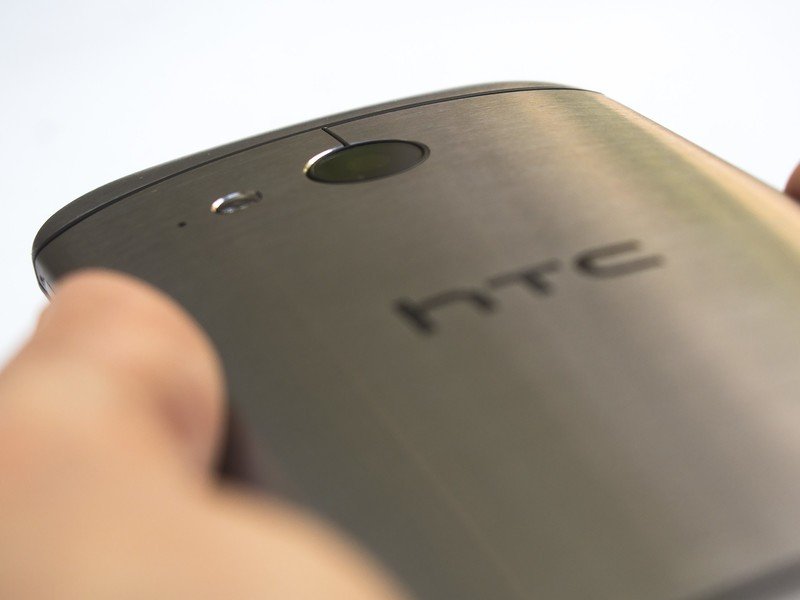
HTC One Mini 2 Cameras
No more Ultrapixels…
The HTC One Mini 2 trades in the "Ultrapixel" camera used in other HTC One phones for a more traditional 13-megapixel BSI sensor, the same module used in the mid-range Desire 816. Around the front is the same selfie-happy 5-megapixel shooter found on the Desire 816 and One M8 — complete with wide-angle lens for fitting in as many people as possible, and an array of beautification filters.
When it comes to the rear camera, the balance of what it's good at has been tilted compared to the M8. Whereas HTC's flagship is extremely quick, great in low light and less impressive in daylight, the Mini 2 produces solid photos in well-lit scenes, but struggles somewhat in darker shots. It's also slower to capture photos, so you'll need to allow more time between exposures, and its tendency towards longer exposure times creates more potential for motion-blurred photos, even in well-lit areas.
Considered in a vacuum, the Mini 2's camera is a decent, average smartphone camera, but little more than that.
Considered in a vacuum, the Mini 2's camera is a decent, average smartphone camera, but little more than that. It'll capture photos with accurate (though not especially vibrant) colors and plenty of detail in well-lit scenes. But even in daylight shots there's lots of noise when images are viewed up close, and this only gets worse when you're using it indoors, or outside in darker conditions. It's true, however, that you can get away with a noisy 13-megapixel shot more than a noisy 4-megapixel image, as we've often experienced from the One M8.

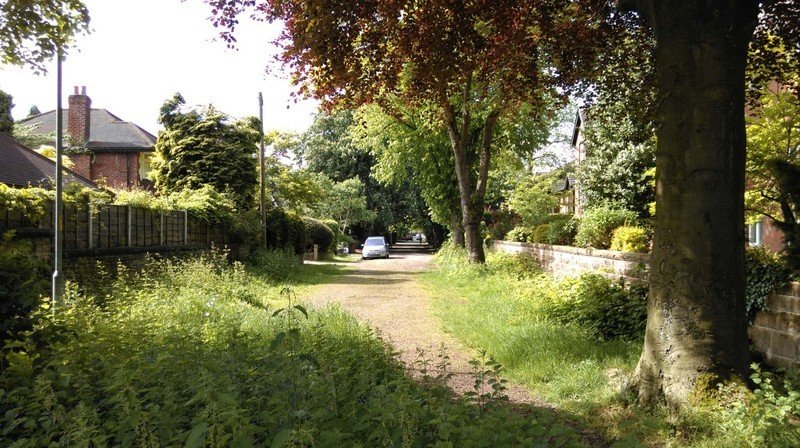
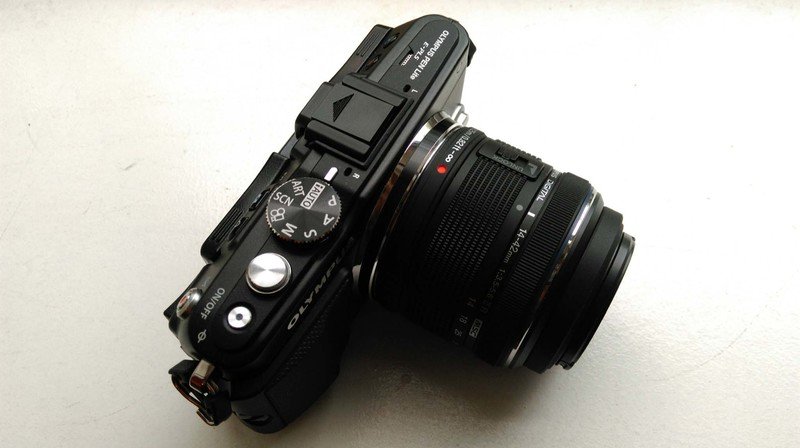
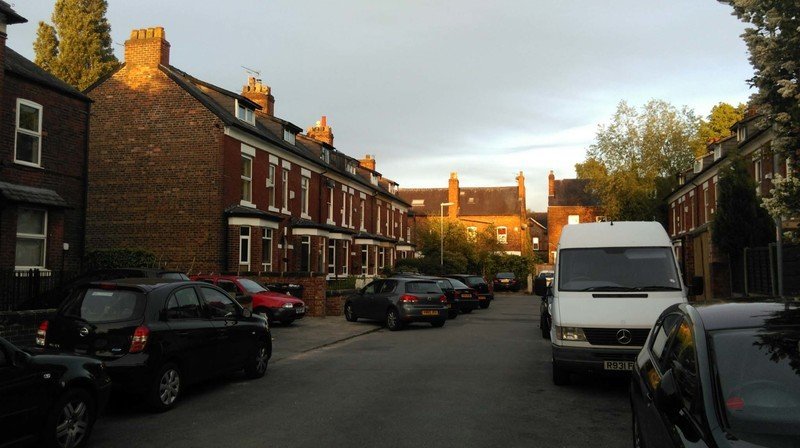





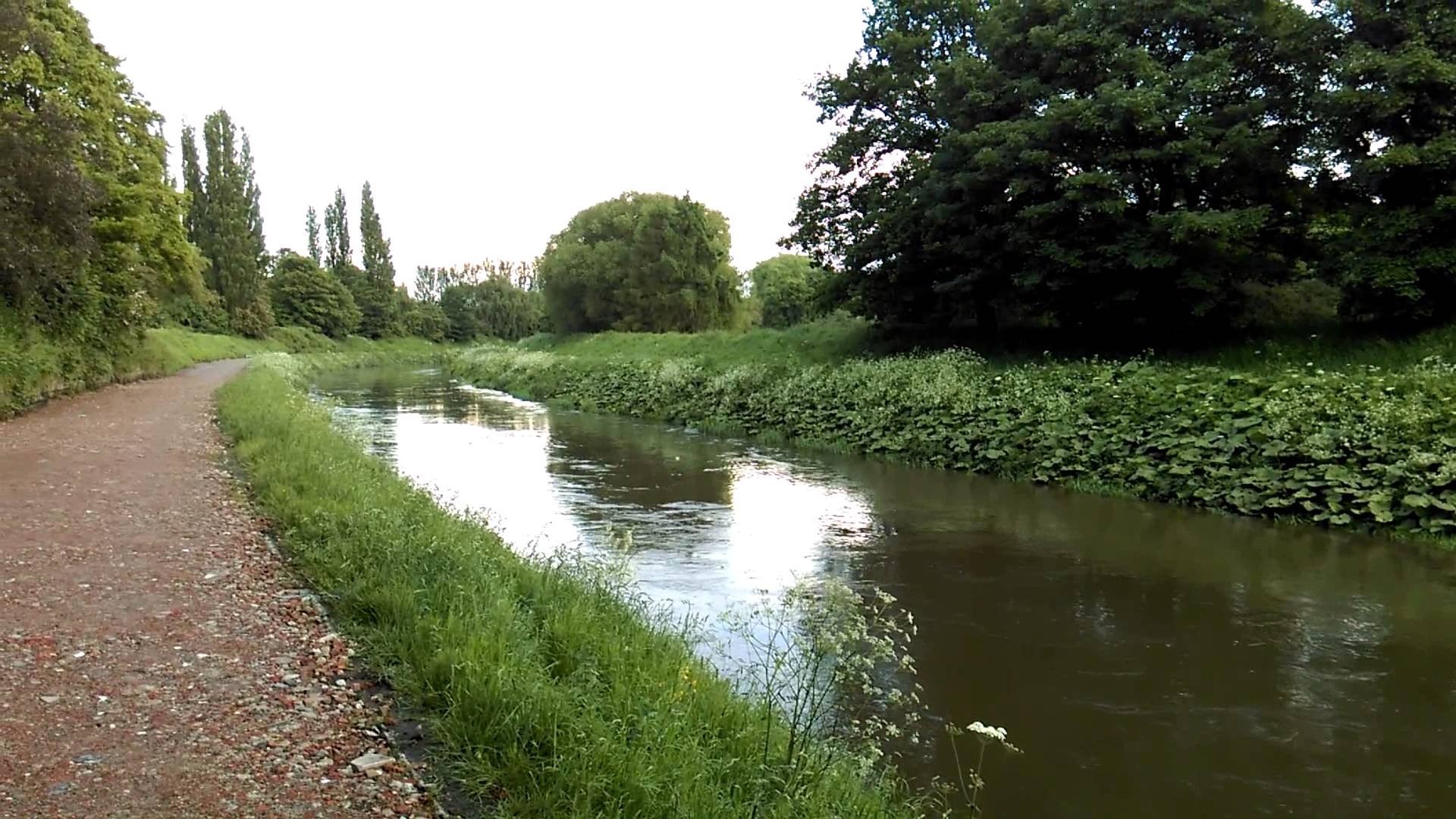
As with the Desire 816 and M8, the Mini 2's camera tends to overexpose outdoor scenes, leading to washed-out skies, and the built-in HDR mode isn't particularly effective at dealing with this. By contrast, the current crop of phone cameras from Samsung and Sony tackle situations like this with relative ease.
Dynamic range continues to be an area of weakness for HTC's camera in both photo and video modes.
Narrow dynamic range is a weakness when shooting video, too, a fairly significant challenge for what's otherwise a solid video camera. Otherwise, the Mini 2's rear camera captures 1080p video at 30 frames per second, with no visual aberrations that we were able to notice. The video camera didn't capture as much fine detail as we've seen from high-end competitors, but you wouldn't necessarily expect that from a mid-tier device.
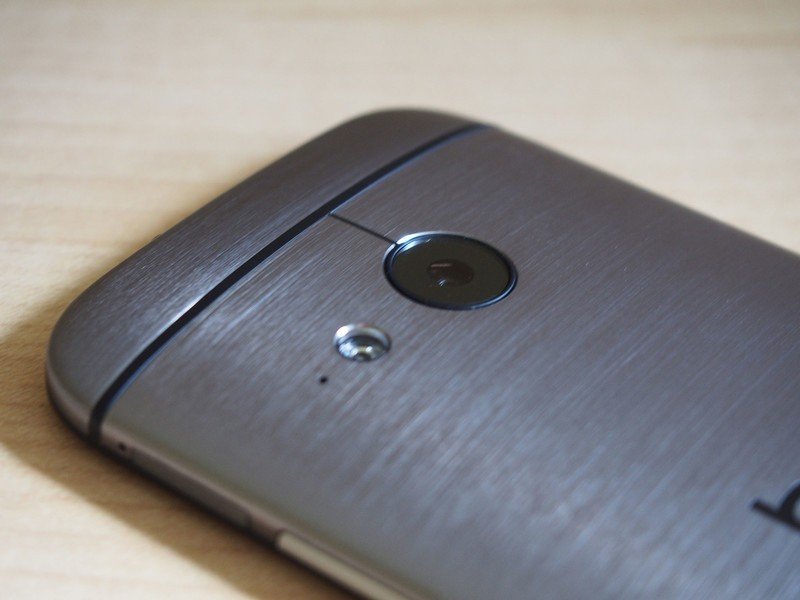
As a side effect of moving to a less specialized camera setup, you also lose some of the cooler camera modes from HTC's high-end models. The Zoe shooting mode, which captures video and a burst of photos at the same time, is out. Same too for Panorama 360, HTC's answer to Photosphere, and Dual Capture, the mode which combines images from the front and rear cameras into the same photo.
What you get with the One Mini 2 is a camera that's reasonably competent, but which seems less special than other HTC One shooters. "Ultrapixel" was one of the central pillars of the HTC One brand last year, and its omission from the One Mini 2 means this phone loses an important point of differentiation, even if the impact on straight-up image quality is more nuanced.

HTC One Mini 2 battery life
All day and then some

The One Mini 2's non-removable 2,100mAh battery doesn't sound like much on paper, but we've been extremely happy with the longevity HTC's been able to eke out of this relatively modest cell. In fact, battery life is one area in which the Mini 2 easily matches its big brother, the One M8.
With mixed usage patterns throughout our two weeks of testing, we never ran out of juice before the end of the day. And even when making a concerted effort to hammer the Mini's battery, its performance was seriously impressive. After accidentally leaving the fully-charged Mini 2 off its charger overnight, I put it through a full day of intensive use before hitting the 14 percent warning level late the following night. After all that, the time on battery was 22 hours and 30 minutes. That time was spent giving the phone a thorough workout, hopping between Wifi and LTE and browsing, checking emails and social apps, as well as streaming Google Play Music over 4G, and YouTube over Wifi.
So even the heaviest users shouldn't need to worry about depleting the battery before the end of the day. With more moderate use, it's entirely possible to get well into a second day on a single charge.
Whatever we threw at the One Mini 2, it always had enough juice to get us to the end of the day.
And that's before you consider the wide array of power-saving options at your disposal. There's the standard power saver mode, which lets you cut back on CPU speed, display brightness and background data to extend your time away from a wall outlet. The EXTREME power saving mode from the M8 has made it across too, allowing you to switch off the phone's higher functions entirely, and limit yourself to just a few apps. In this mode it's possible to squeeze hours of life out of just a few percent of remaining charge.
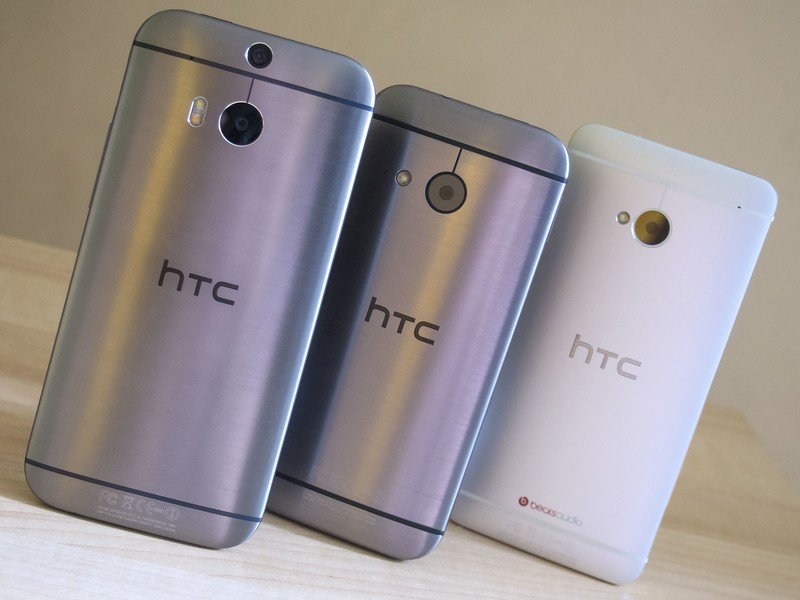
HTC One Mini 2: The Bottom Line
A competent 'mini' flagship, but the competition's fierce
When I first laid eyes on the HTC One Mini 2 a few weeks back, my initial reaction was "here we go again." I expected another mid-range mini, a cut-down, compromised version of one of the best Android phones on the market. (And one with somewhat clumsy branding to boot.)
Spending a few weeks with the phone has turned that opinion on its head. I've enjoyed using the One Mini 2 a lot, and I actually prefer some aspects of it to the M8. The size, for one — the Mini is easier to hold and way less slippery in the hand, without compromising the premium look and feel we've come to expect from HTC One phones. Overall performance and responsiveness isn't quite up to M8 levels, but it's damn close. On top of that you've got absolutely stellar battery life.
With launch pricing set at £360-370, however, the One Mini 2 will face fierce competition from multiple challengers. It's a little more expensive than Sony's Xperia Z1 Compact, which offers a faster Snapdragon 800 CPU and a superior 20.7-megapixel camera. Admittedly, although the Z1 Compact excels in raw specs, the Mini 2 has superior build quality and a better-looking, larger display.
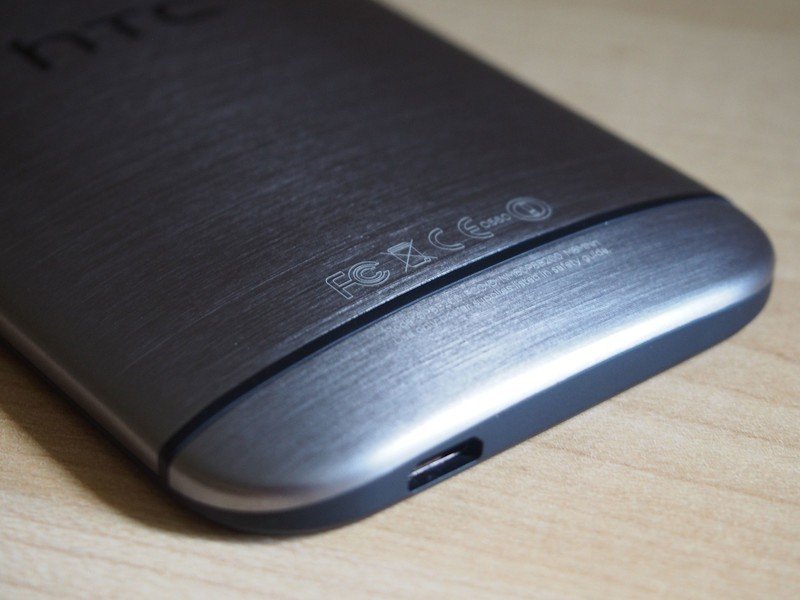

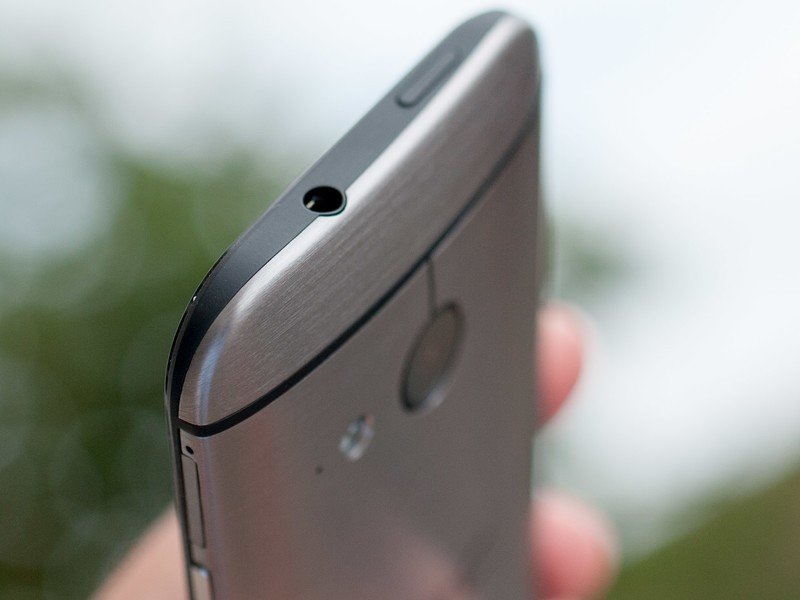
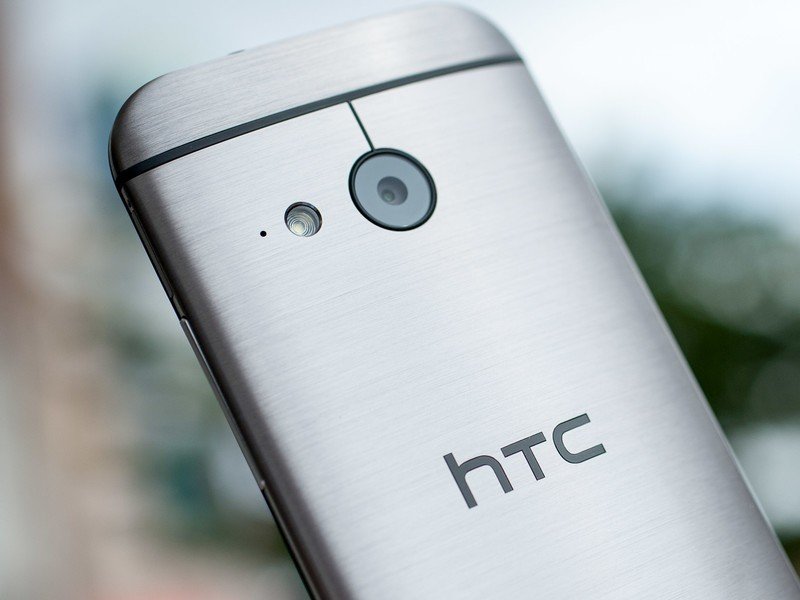
And though it's a very different class of smartphone, the hugely underrated LG G2 now sells for a little under £300, with a Snapdragon 800 processor, a considerably larger display and a superior camera with optical image stabilization. Google's own Nexus 5 also lurks around the same price point.
The comparison with HTC's year-old One M7 is interesting too, especially since that phone has just been updated to Sense 6 in many countries. A SIM-free M7 will set you back around the same as a brand new One Mini 2, but with a larger, higher-resolution display, double the RAM and internal storage and HTC's Ultrapixel camera, complete with Zoe mode. On the other hand, the Mini 2 is, in our opinion, the better-looking and more ergonomic phone. It also trounces the M7 when it comes to battery life, and the differences in day-to-day performance outside of games just aren't that great. In theory the M7 gets you more phone for your money; in practice things aren't as clear-cut.
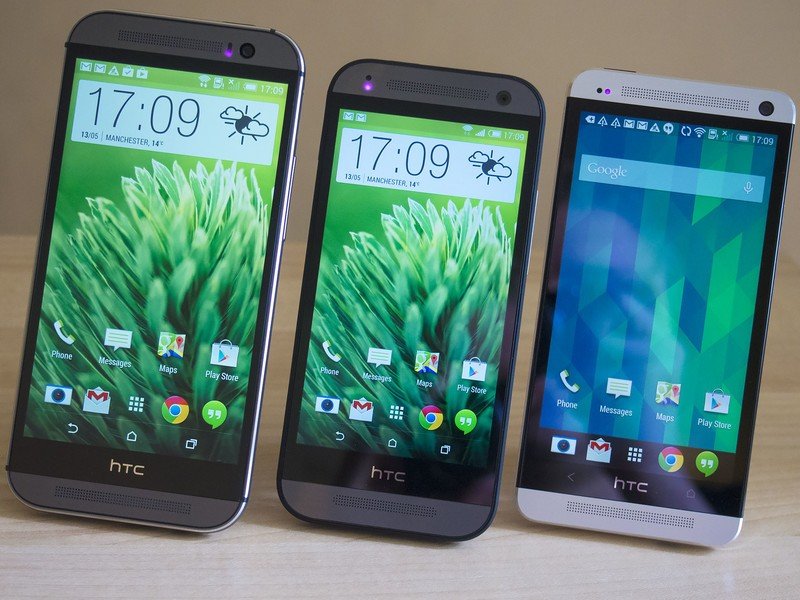
What's more, SIM-free pricing doesn't necessarily align with on-contract costs, so we'll have to wait and see how operators position the One Mini 2 in their device portfolios.
The HTC One Mini 2 is a compelling mid-level smartphone wearing the clothes of a premium smartphone.
Overall, the HTC One Mini 2 is a compelling mid-level smartphone wearing the clothes of a premium smartphone. There's very little to complain about in terms of build quality, user experience, performance or battery life, and even the 13-megapixel camera is just mediocre, at worst. But for a device bearing HTC's exclusive One-series branding, the Mini 2 feels a little less special than other members of this family. Throughout our time with the phone we couldn't help wondering: As close as the Mini 2 is to the M8 in terms of speed and responsiveness, we'd love to have a real HTC flagship in this kind of form factor.
Instead what you'll get is around two-thirds of the M8 experience for two-thirds of the price. And you know what? That's still a pretty good deal. But buyers might want to consider Sony's more powerful Xperia Z1 Compact and HTC's still-great One M7 before coming to a final decision.

Alex was with Android Central for over a decade, producing written and video content for the site, and served as global Executive Editor from 2016 to 2022.
